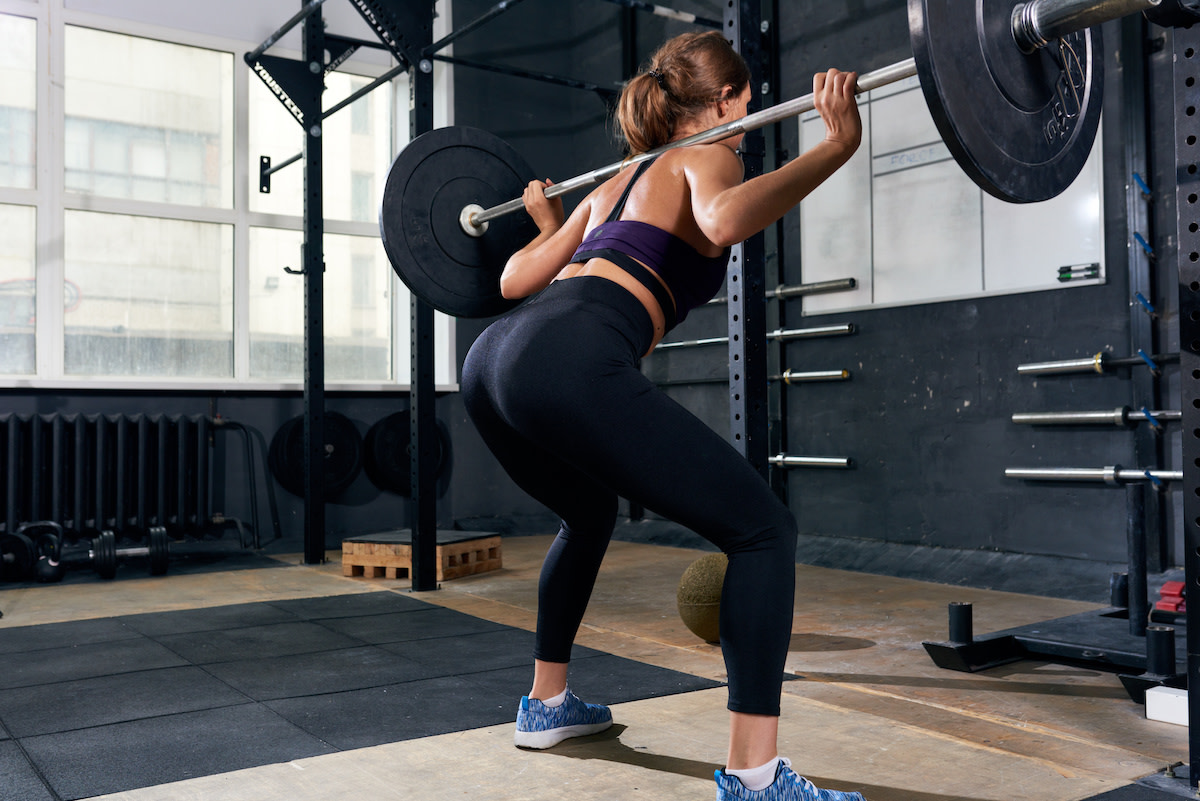How to Do Quarter Squats With Perfect Form
Written by MasterClass
Last updated: Jun 7, 2021 • 4 min read
If you’re looking for a bodybuilding exercise that can increase explosive power in your legs, consider incorporating quarter squats into your strength-training program.
Learn From the Best
What Are Quarter Squats?
Quarter squats are a squat variation designed to activate muscles throughout your lower body. Perform quarter squats by holding a weighted barbell behind your upper back similar to how you would with a back squat. Hinge your knees slightly to lower your body, keeping the range of motion shorter than the full depth of a back squat. If you’re a novice lifter, consider trying quarter squats with your bodyweight before squatting with heavier loads.
3 Benefits of Doing Quarter Squats
With proper form, quarter squats can become a useful addition to your squat training program.
- 1. Quarter squats work your leg muscles. Although quarter squats target fewer muscle groups than standard squats, they can still promote muscle hypertrophy in your lower body—particularly in your hamstrings and quadriceps.
- 2. Quarter squats can improve your full squats. For experienced lifters, partial squats can allow you to lift heavier weights than deep squats, helping you to break through weightlifting plateaus. If you’ve hit your lifting potential during the full range of motion of back squats or front squats, use the smaller squat depth of a quarter squat to push beyond those limits.
- 3. Quarter squats can enhance your explosive strength. With practice, quarter squats can activate muscles that improve your athletic performance during activities like sprinting and vertical jumping. If you want to improve your vertical jump height, practice quarter squats.
How to Do Quarter Squats With Proper Form
For quarter squats, begin by using a weight that you can control for 3–4 sets of 8–12 repetitions. Choose a weight that allows you to maintain good technique throughout all sets and repetitions.
- 1. Set up a barbell in the squat rack according to your height. The barbell should be slightly lower than your shoulders. You should have enough space to take a couple of steps backward after unracking the barbell.
- 2. While facing the barbell, step underneath the barbell and place your hands on both sides of it. The barbell should rest on the muscles of your upper back.
- 3. Un-rack the barbell and take a couple of steps backward until you’re a few inches away from the box. Your posture should be tall with your feet slightly wider than hip-width apart and a slight bend in your knees. Keep your shoulders directly over your hips and your head and neck in a neutral position. Your chin should remain tucked throughout the movement, as if you were holding an egg under your chin.
- 4. Evenly distribute your weight and grip the floor with your feet to create a stable position. Rotate your shoulders outward to engage your lats and upper back. Pre-tension your shoulders and hips and engage your core. All repetitions should begin from this position.
- 5. While maintaining your alignment, begin the downward movement by bending your hips and knees. Lower as you would with a full squat and stop halfway. Pause at the bottom of the position.
- 6. To begin the upward movement, push your feet into the ground to initiate standing. Place emphasis on pushing through your midfoot and heel while keeping your toes engaged. As you begin to stand, keep your chest high and squeeze your glutes. Allow your knees to straighten and your hips to travel forward.
- 7. As you finish the movement, squeeze your glutes and quadriceps while maintaining a neutral spine. At the end of each repetition, your shoulders should finish directly over your hips. Imagine that your pelvis is a bucket filled with water and you’re attempting not to spill any of it.
How to Work Out Safely and Avoid Injury
If you have a previous or pre-existing health condition, consult your physician before beginning an exercise program. Proper exercise technique is essential to ensure the safety and effectiveness of an exercise program, but you may need to modify each exercise to attain optimal results based on your individual needs. Always select a weight that allows you to have full control of your body throughout the movement. When performing any exercise, pay close attention to your body, and stop immediately if you note pain or discomfort.
In order to see continual progress and build body strength, incorporate proper warm-ups, rest, and nutrition into your exercise program. Your results will ultimately be based on your ability to adequately recover from your workouts. Rest for 24 to 48 hours before training the same muscle groups to allow sufficient recovery.
Want to Dive Deeper Into Your Wellness Journey?
Throw on some athleisure, fire up a MasterClass Annual Membership, and get ready to sweat it out with exclusive instructional videos from Nike Master Trainer and GQ fitness specialist Joe Holder. Want to improve your cardiovascular endurance? Give Joe’s HIIT workout a go. Trying to get a little swole? He’s got a strength training workout for that. From fitness tips to nutrition hacks, Joe will have you feeling healthier in no time.
